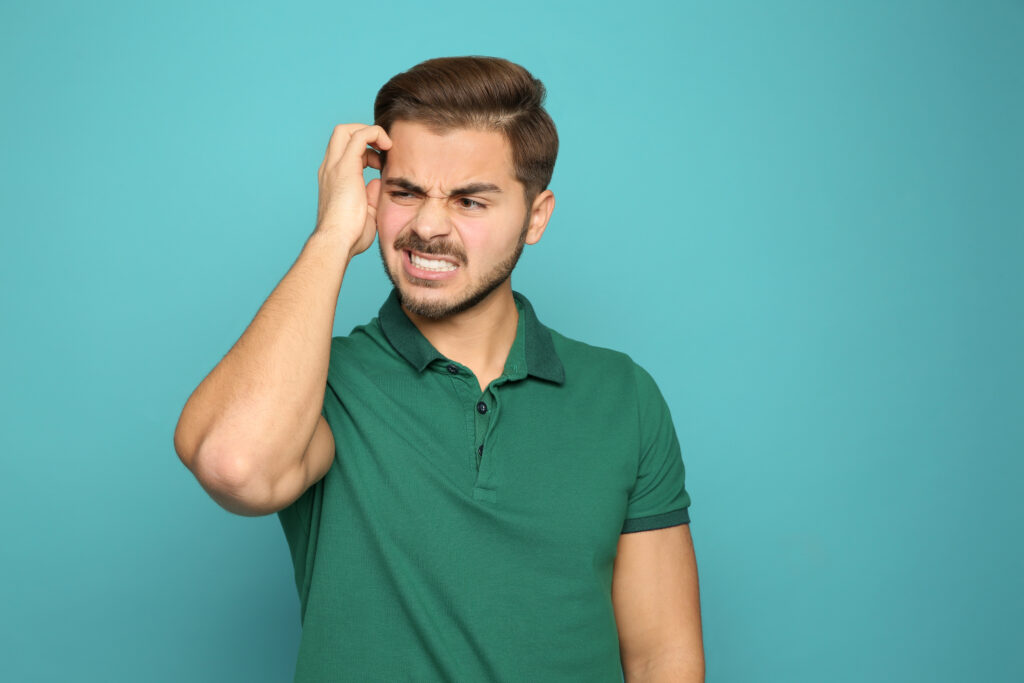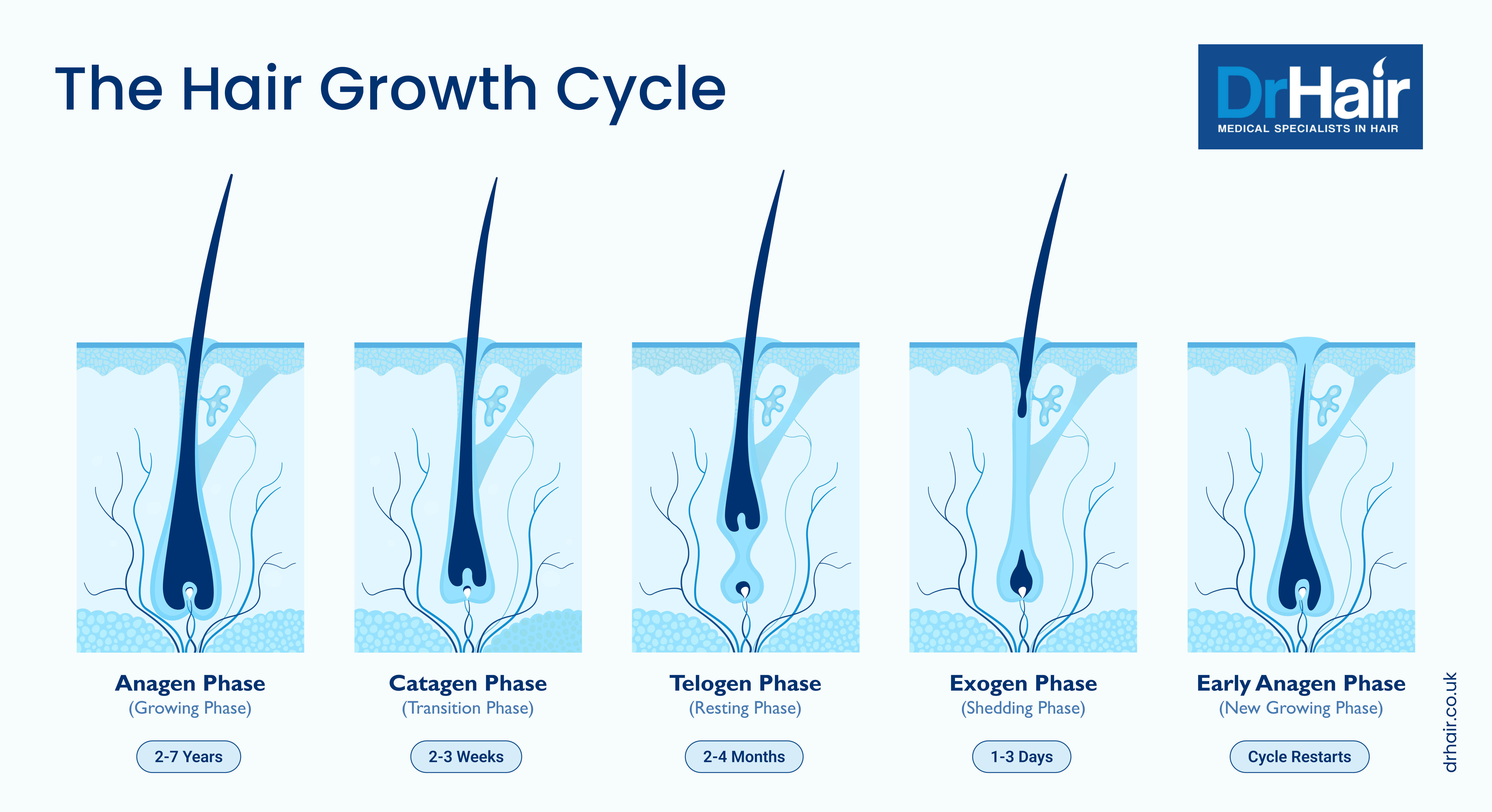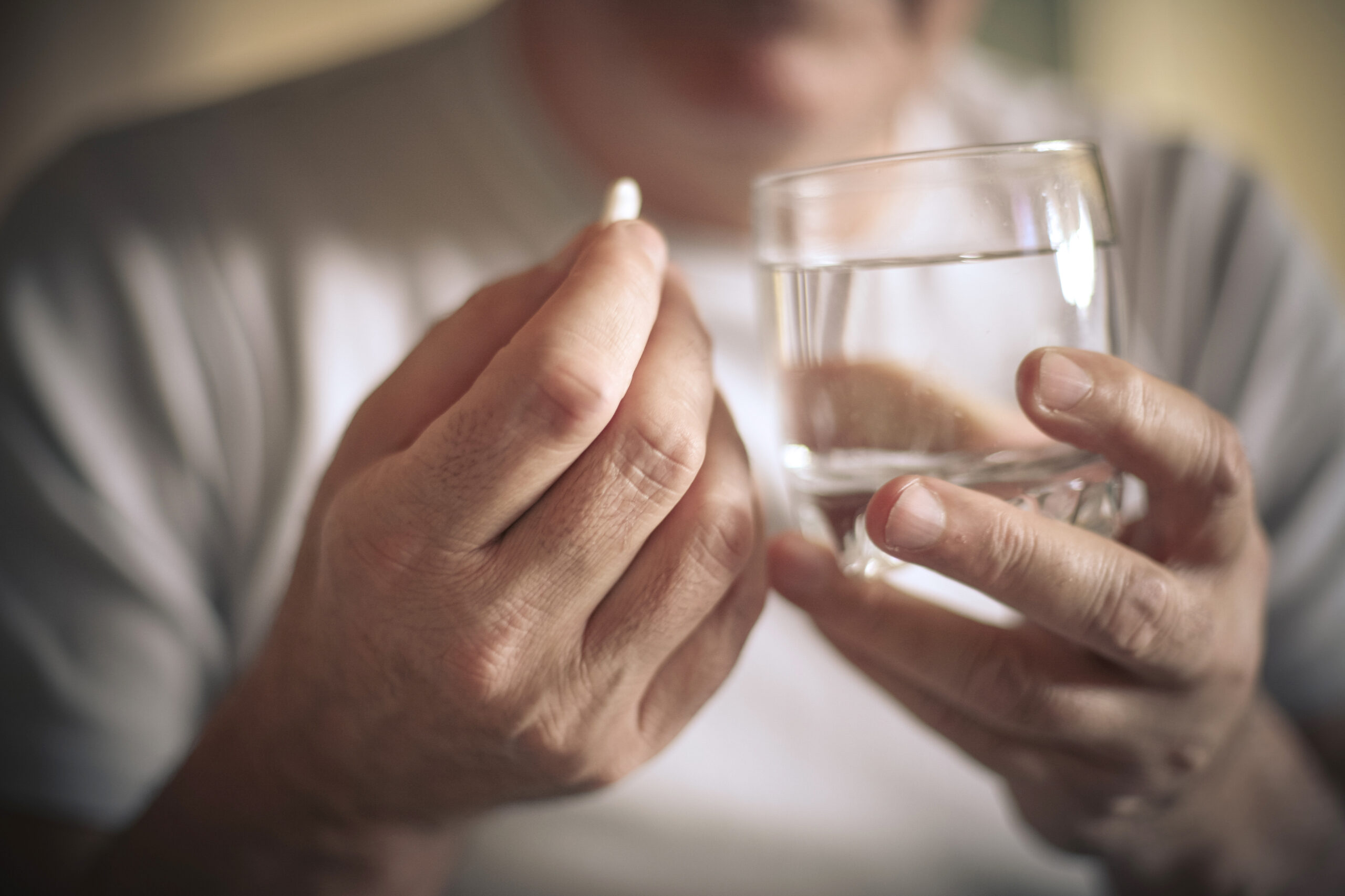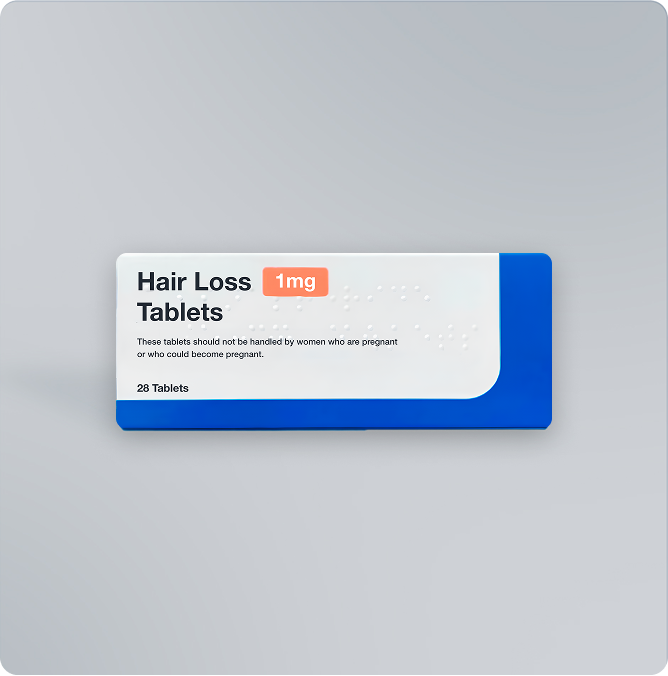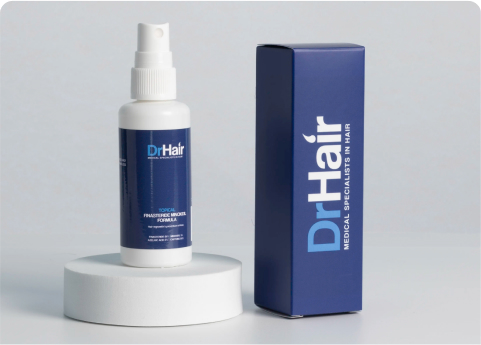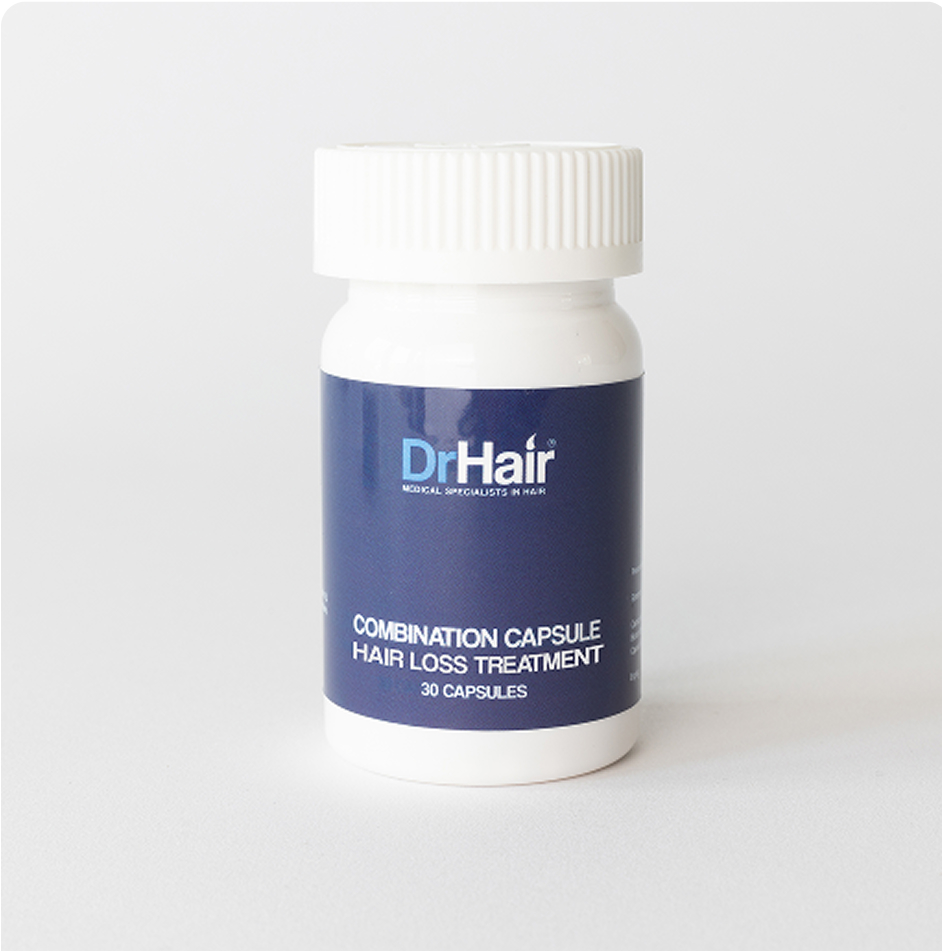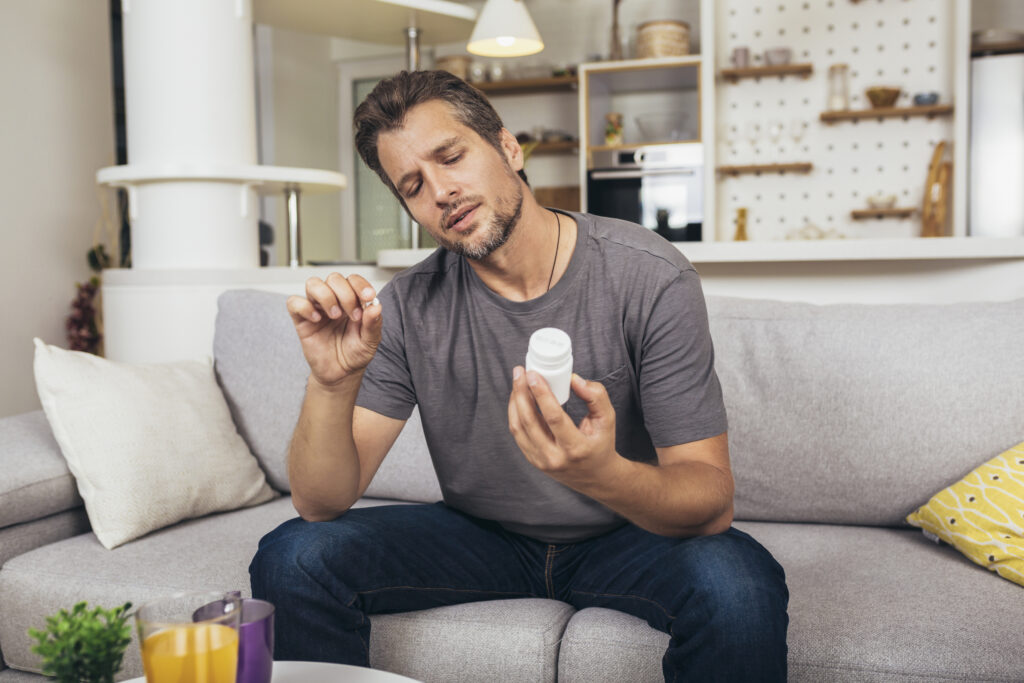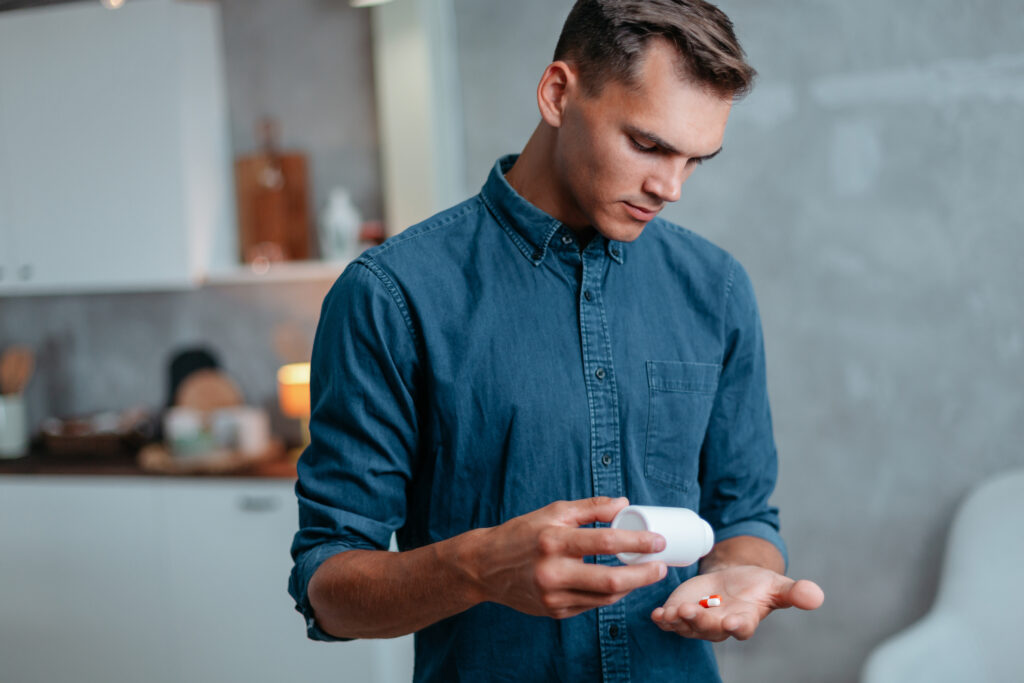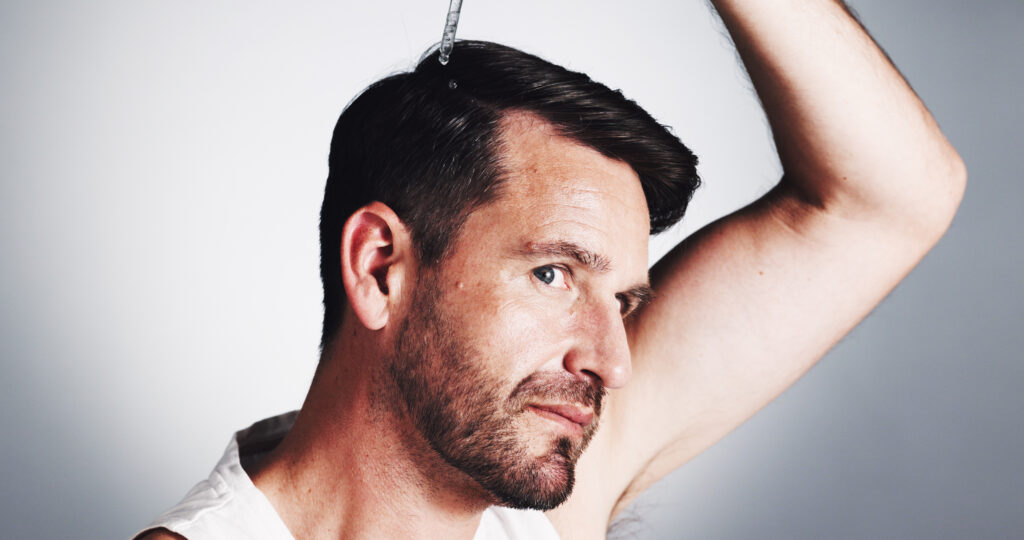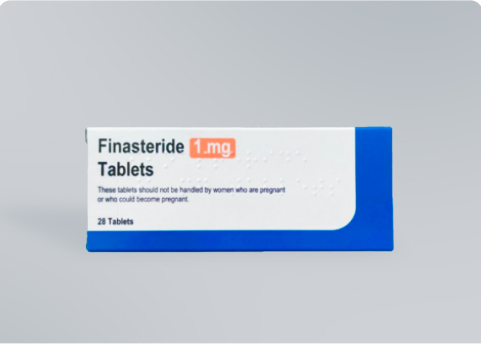Side effects are a common concern for those seeking hair loss treatments. And like all medications, minoxidil does have some potential side effects you should be aware of. But as a topical solution, its adverse effects tend to be mild and short-lived, if you experience them at all. Studies show that minoxidil side effects impact less than 7% of men [1].
Here, you’ll learn all about minoxidil side effects, including:
- What side effects are associated with minoxidil use.
- Common side effects for men vs women.
- How you can prevent or reduce side effects from minoxidil.
What is minoxidil and how does it help with hair growth?
Minoxidil is one of just two licensed treatments for male pattern baldness (the other being finasteride). It is a vasodilator, which means it widens the blood vessels. When applied topically to the scalp, minoxidil dilates the blood vessels that feed the hair follicles, increasing the amount of nutrients and oxygen that facilitate hair growth.
Oral minoxidil has the same effect, but it dilates blood vessels throughout your body. This often enhances hair growth, but may also increase the risk of systemic side effects.
Minoxidil can also advance the hair growth cycle, pushing follicles in the resting phase forward into the growth phase.
Types of minoxidil and their side effects
Minoxidil is available in topical and oral forms. Topical minoxidil generally has milder, more localised side effects than oral minoxidil. The table below shows the more common side effects associated with topical vs oral minoxidil (in order of frequency) [2-3]:
|
Topical minoxidil |
Low-dose oral minoxidil |
|
Itching, rash or irritation Facial hair growth Temporary hair shedding Increased dandruff Headaches |
Hypertrichosis (hair growth across the body) Feeling lightheaded Fluid retention Tachycardia (increased heart rate) Headaches Insomnia |
The risk of side effects is low when using minoxidil. Even oral minoxidil (which is linked with more serious side effects) is generally prescribed at a low dose for hair loss, so you’re very unlikely to experience a serious or significant reaction [4].
That said, it’s important to be informed about the possibility of side effects before you start any new treatment or medication. So let’s take a look at each of these in more depth.
Topical minoxidil side effects
Topical minoxidil is available over-the-counter in two concentrations: 2% and 5%. Most patients are advised to apply minoxidil to thinning areas twice a day. These formulas are proven to treat male pattern baldness, female pattern hair loss, alopecia areata, and many other types of alopecia.
From itchiness to hair loss, find out all about the potential risks of topical minoxidil below.
Itching, rash or irritation
Skin irritation is the most common complaint from minoxidil users. This can manifest as a feeling of itchiness around the application site, a minoxidil-induced rash, or skin that feels sore and looks red.
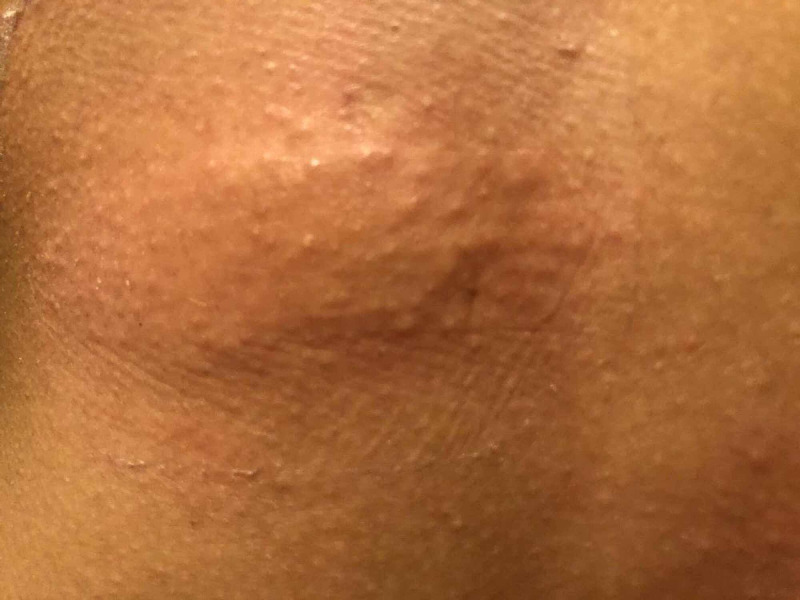
Raised minoxidil rash due to allergic contact dermatitis. Source & image credit: [5]. See other examples of minoxidil related rashes in studies [6] and [7].
Itching and irritation can be signs of an allergy, but they’re not always. It’s best to patch test any new treatment on a small area before applying it too liberally to see how your skin reacts.
Facial hair growth
Some minoxidil users — both male and female — report increased facial hair growth from this treatment. While this may be less of an issue for men, this is a side effect most women want to avoid. It’s why 2% minoxidil treatments are often recommended for women over 5% minoxidil solutions.
Learn more about the side effects of minoxidil for men.
Temporary hair shedding
An increase in hair loss a few weeks after starting treatment is an alarming but normal side effect of topical minoxidil.
In order to advance follicles through the hair growth cycle, minoxidil activates the follicles that are in the resting phase, pushing them forward into the growth phase. But to produce new hair, the follicle must shed its existing hair. This creates a sudden increase in hair loss — but this is normal and temporary.
Within a few weeks, these follicles will start to produce hair again, and you should see increased thickness and density in the minoxidil-treated areas. Learn more about whether minoxidil causes hair loss.
Increased dandruff
If you already have dandruff, seborrheic dermatitis, or another flaky scalp condition, minoxidil can make this worse. A dry scalp can also make itchiness worse, so it’s important to tackle this if it affects you.
Try complementary treatments containing ketoconazole, piroctone olamine, or antifungal agents to keep these scalp conditions under control.
Headaches
While uncommon, some users report experiencing headaches while using minoxidil. This may be due to its hypotensive effect; minoxidil can reduce your blood pressure, potentially leading to headaches and feelings of dizziness.
Headaches are more common if you overuse minoxidil, so try to stick to the recommended minoxidil application schedule.
Oral minoxidil side effects
Oral minoxidil is a prescription drug in the UK, and must be prescribed off-label to treat hair loss. But studies have shown that daily doses from 0.25 mg to 5 mg are safe and effective for hair loss [4].
Oral minoxidil is liable to cause more significant side effects than topical minoxidil. But these side effects are still relatively uncommon and manageable, especially at the low doses prescribed for hair loss. Let’s take a look at the side effects linked with low-dose oral minoxidil.
Hypertrichosis
Hypertrichosis refers to excessive hair growth on the face and body. It happens because oral minoxidil dilates follicular blood vessels all over the body, rather than just on the scalp, promoting hair growth more extensively.
Cosmetically, this is more of a problem for women than men. Women using minoxidil may benefit from a lower dose of oral minoxidil to reduce this side effect.
Dizziness and feeling lightheaded
Oral minoxidil is licensed to treat high blood pressure. So if you have normal blood pressure and minoxidil causes it to drop, you can start to feel dizzy or lightheaded. Drinking plenty of water and eating a full, balanced diet can help with feelings of dizziness.
Fluid retention
Minoxidil can make your body hold more water than normal, leading to fluid retention that manifests as swelling (particularly around the eyes, ankles, and legs). That’s because the body can respond to a drop in blood pressure by retaining sodium and water to boost blood volume.
Fluid retention is very rare at the dosage normally used for treating hair loss. But if you’re concerned, it’s important to seek medical advice.
Tachycardia (increased heart rate)
Tachycardia, or increased heart rate, is another physical response to a drop in blood pressure caused by oral minoxidil. You may experience this as heart palpitations or even shortness of breath.
Headaches
Headaches can occur in oral minoxidil users as well as topical minoxidil users. It’s not always obvious if minoxidil is causing your headache or if there’s another reason. If your headache is due to minoxidil, it may fade away after a few weeks of taking the drug.
Insomnia
Minoxidil can make it more difficult to sleep, especially if you take your dose in the evening. Minoxidil-related insomnia is often due to other side effects that can keep you awake, such as headaches or a racing heart.
If you’re finding it hard to sleep while taking minoxidil, consider taking it earlier in the day. Make sure to practice good sleep hygiene, too.
How long do minoxidil side effects normally last?
There’s no specific timeframe for how long minoxidil side effects last. It depends on a few different factors, such as concentration or dose, treatment frequency, and whether you’re predisposed to specific side effects.
That said, in the majority of cases, minoxidil side effects are short-lived and temporary, and will last no more than a few months. Most patients tolerate any side effects quite easily [8].
Minoxidil side effects usually subside with continued treatment, or disappear if you decide to stop using minoxidil. (If you do stop taking minoxidil, your hair loss is likely to resume within a few weeks unless you replace it with an alternative treatment, such as finasteride).
Can you prevent minoxidil side effects?
You may not be able to prevent minoxidil side effects altogether, but there are steps you can take to reduce the risk or treat any adverse reactions that crop up. Here are some effective ways to minimise and treat minoxidil side effects.
1. Switch to a lower dose or concentration
Higher doses or concentrations of minoxidil are associated with a greater risk of side effects [9]. Switching to a lower dose of oral minoxidil or a 2% minoxidil solution may help limit any side effects you’re experiencing.
You should also learn how to apply minoxidil to get the best results with the fewest side effects.
2. Treat any side effects
Certain side effects can be tackled with effective treatments and therapies:
- Itchiness — Over-the-counter antihistamines can alleviate itching and irritation.
- Headaches — Standard painkillers like paracetamol may help you manage mild minoxidil-induced headaches.
- Dandruff or flaky scalp — Anti-dandruff shampoos and anti-fungal treatments can help reduce symptoms of dandruff and seborrheic dermatitis.
- Insomnia — Improve your sleep habits: go to bed at a reasonable time, avoid using mobile devices in bed, and don’t drink caffeine too close to bedtime.
3. Seek advice from your GP
Some side effects should be checked out by a medical professional, as they can have other underlying causes. For example, swelling in the legs can be caused by deep vein thrombosis, which requires urgent medical attention and can be life-threatening if not treated. Low blood pressure can be a symptom of diabetes or pregnancy.
If you’re worried about any of your symptoms, get an appointment with your GP.
Get minoxidil direct from DrHair
Minoxidil is a safe and effective treatment for several types of hair loss. In most cases, any side effects from minoxidil are mild and temporary. Continuing to use the treatment as directed won’t normally cause any harm, and any side effects will eventually subside.
We’ve supplied our DrHair Minoxidil 5% Formula to thousands of men over 30 years via pharmacies and clinics across the UK. Now you can purchase our topical minoxidil and get it delivered directly to you at the best possible price. Try a single month’s supply, or subscribe and get the lowest prices.
FAQs
Learn more about the side effects of minoxidil in these frequently asked questions.
There is no evidence that minoxidil has carcinogenic effects. While some lab studies have linked minoxidil with the proliferation of cancer cells in breast and liver cancers, minoxidil has been widely used for decades and there’s no indication that minoxidil can increase the risk of cancer [10]. So it’s very unlikely that using prescribed low doses of minoxidil will cause or contribute to cancer. Minoxidil is also used clinically to help treat long-term hair loss from chemotherapy [11].
Minoxidil is very unlikely to cause sexual side effects like erectile dysfunction. Sexual side effects are more commonly associated with finasteride.
In one comparative study, minoxidil users were around 12 times less likely to report erectile dysfunction than finasteride users [12]. Loss of libido and ejaculation disorders were also far less common in minoxidil users.
Yes. Unless you replace minoxidil with another effective treatment, your hair loss is likely to resume if you stop taking it.
There are no reports of minoxidil having a significant impact on patients’ mental health. This side effect is more often associated with finasteride use. If you’re using oral finasteride + topical minoxidil together, you should stop taking finasteride and consult with a doctor if you’re experiencing depression, anxiety, or low mood.
Topical minoxidil is generally safe to use alongside other drugs, but oral minoxidil may not be. In general, you shouldn’t take minoxidil alongside medications used to treat high blood pressure. See a full list of minoxidil drug interactions here.


